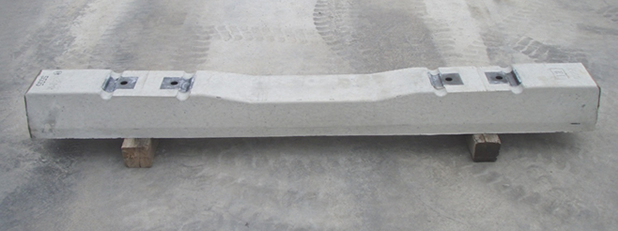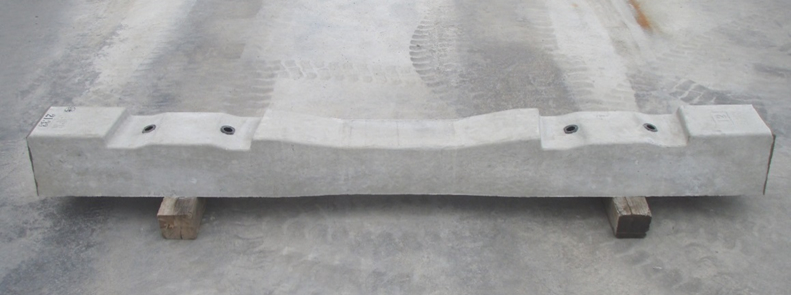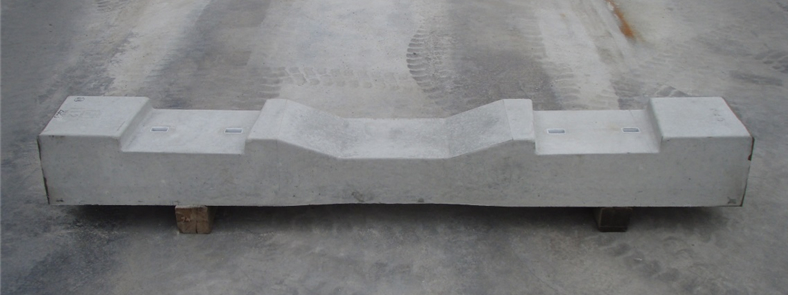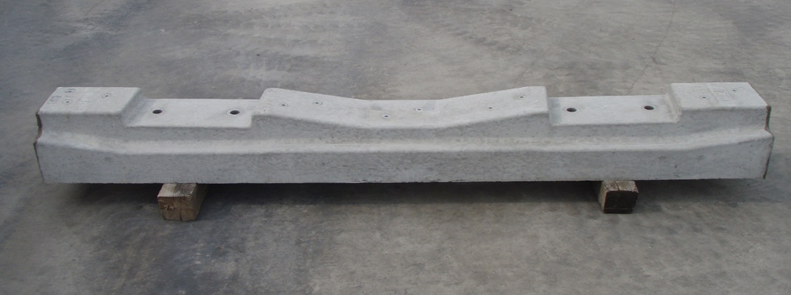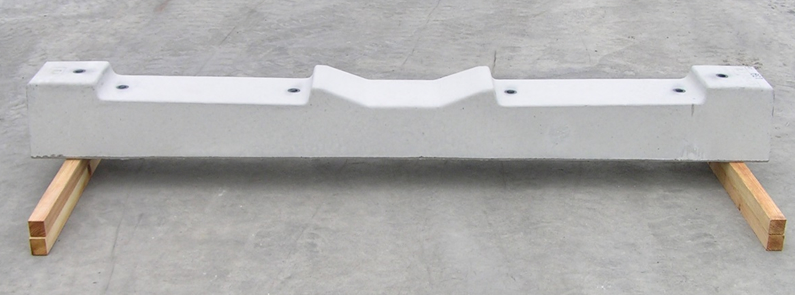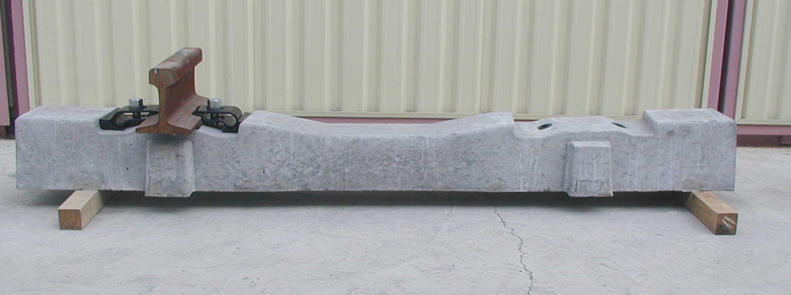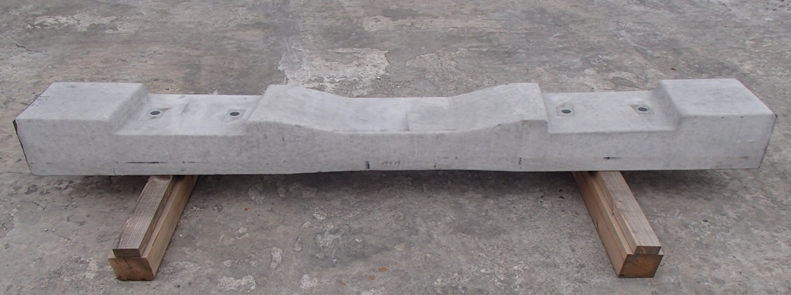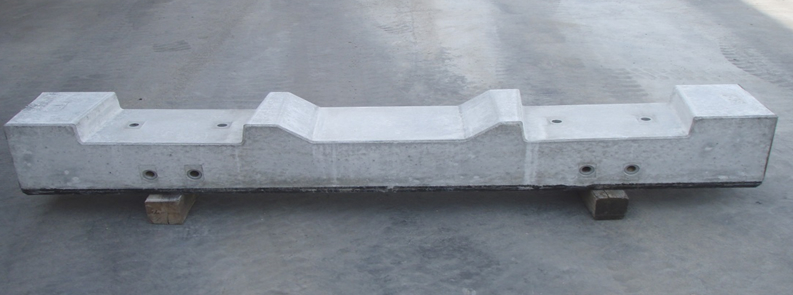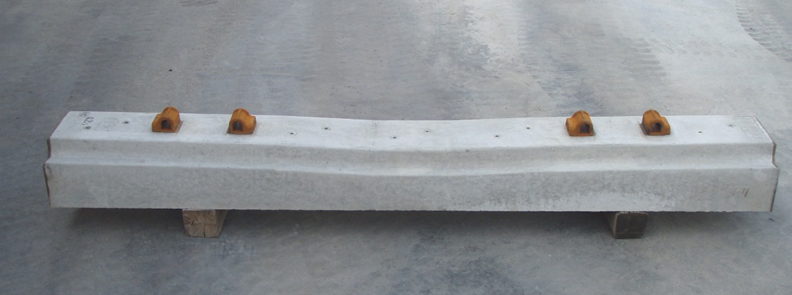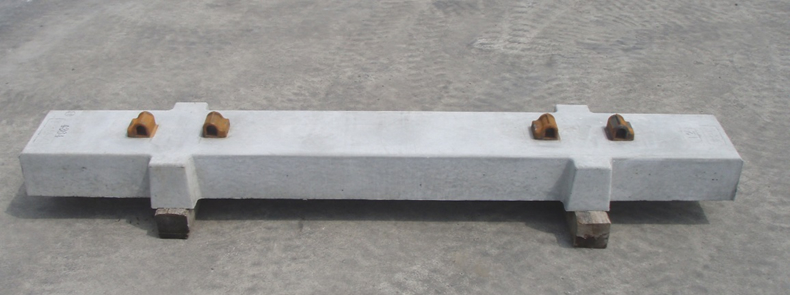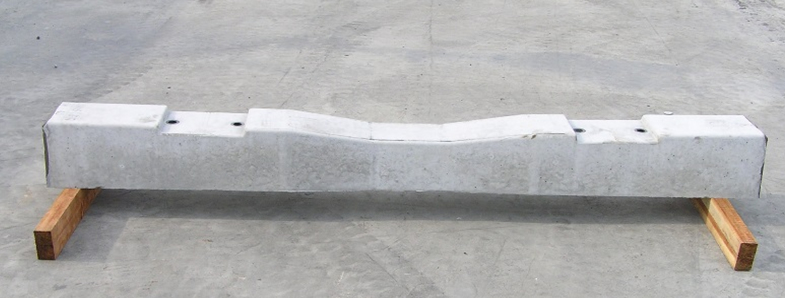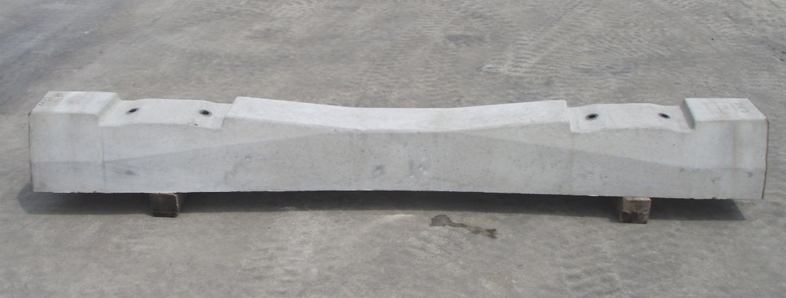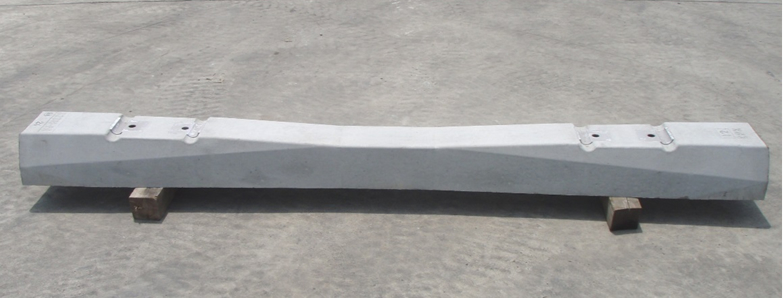PC sleepers
1. Overview
- PC (prestressed concrete) sleepers are the most common sleepers used for railway tracks. Prestressed concrete is concrete to which compressive force is applied using high tensile PC steel in order to make the concrete strong against tensile force. When manufacturing PC sleepers, a pre-tension method and post-tension method can be used, with the pre-tension method becoming more common in recent years.
- Railroad cars travel atop two rails, and the sleepers serve as supports for these rails. The role of the sleepers is to ensure the railroad cars travel safely and comfortably by ensuring that a set distance (gauge) is maintained between the rails and that the train weight is distributed efficiently in order to prevent the rails from bending or subsiding.
- The standard gauge, which is widely used internationally, is 1,435mm, with those wider known as “wide gauge” and those narrower known as “narrow gauge.”

For narrow gauge lines
| For general use (JIS products) |
No. 3
|
|---|---|
|
No. 6
|
|
|
For special sections
|
|
|
For joints
|
|
|
For cable protection
|
|
| For specified sections |
For expansion joints
|
|
No. 6 winged: For safety guard installation
|
|
|
Elastic sleeper for directly fastened track (for vibration-proof track) |
4K-type: For expansion joints
|
| Ballasted track elasticity |
Fitting-type (No. 30): Sleeper mat / rubber (synthetic rubber integrated type) Fitting-type (No. 32): Sleeper mat / urethane (polyurethane integrated type) 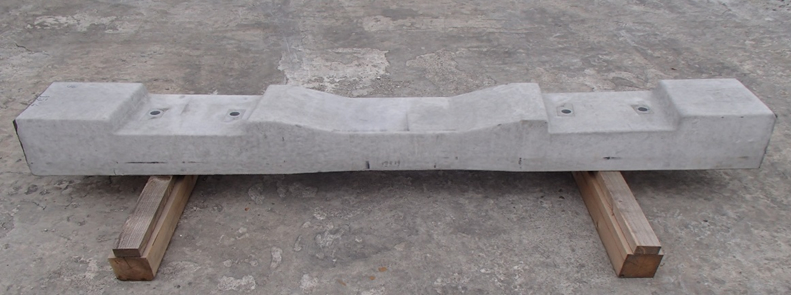 |
|
For articulated tracks: Sleeper mat (synthetic rubber integrated type)
|
|
| Pandrol-type |
No. 6 (50N)
|
|
No. 6 winged (50N)
|
|
|
For cable protection
|
|
|
For general use (1/40 gradient): TMW
|
|
|
For general use (h=140): TMW-2
|
|
|
For general use (h=140 1/40 gradient): TMW-3
|
|
|
50N(PRS5H) main line type 50N(PRS5H) cable protection type 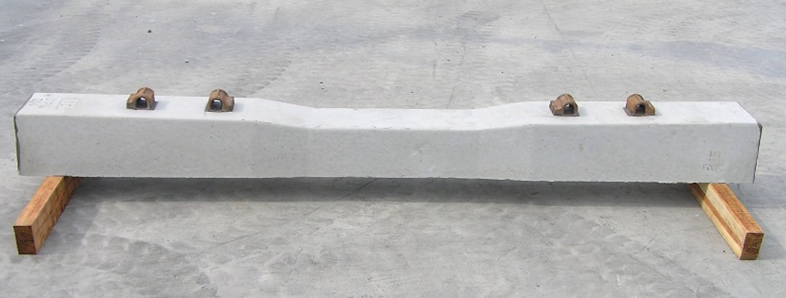 |
|
| Nabla-type |
For general use / For joints / For cable protection
|
For standard gauge lines
| For general use (JIS products) |
3T
|
|---|---|
|
3H
|
|
| For specified sections | For expansion joints / For cable protection |
| Ballasted track elasticity | For general use: Pour-in-type urethane |
| For cable protection: Pour-in-type urethane | |
| Fitting-type (No. 50): Sleeper mat / rubber (synthetic rubber integrated type) | |
| Fitting-type for cable protection: Sleeper mat / rubber (synthetic rubber integrated type) | |
|
Departure prevention sleepers (Shinkansen lines) / urethane
|
|
| For private railways |
K220S (Kansai Railway Association type)
|
| K220SA (Kansai Railway Association type) | |
| H220S |
For railroad switches
| For narrow gauge lines | Point sections |
L=2000 - 2400 (for general use) L=2000 - 2300 (for cable protection) L=2000 - 2300 (for cranks) L=2200, 3300, 4000 (for motors) |
|---|---|---|
| Crossing sections |
L=2600 - 4000 (for general use) L=2800, 3500 (for cranks) |
|
| For standard gauge lines | Point sections |
L=2400 - 2800 (for general use) L=2500 (for cranks) L=2600 (for motors) |
2. Key Features
- Because prestressing is used to apply compressive force, the sleepers are highly impact-resistant to repeated train loads and offer excellent durability.
- Because they are concrete, the sleepers are resistant to the weather and other natural environmental factors and have a longer lifespan compared with wood.
Development technology
We are developing advanced, high-performance PC sleepers.
Articulated sleepers (JR West specifications)
Tracks with increased longitudinal track span rigidity require less maintenance work and are more effective at reducing ground vibration; however, they are difficult to structurally incorporate into existing lines. Articulated sleepers are sleepers which facilitate incorporation into existing lines via a combination of sleepers with coupling members.
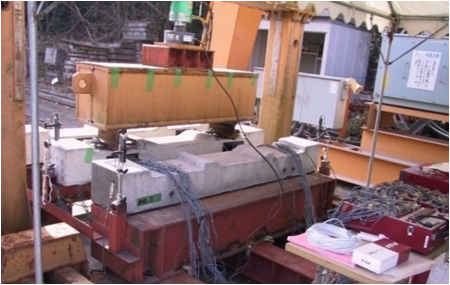
▲Testing
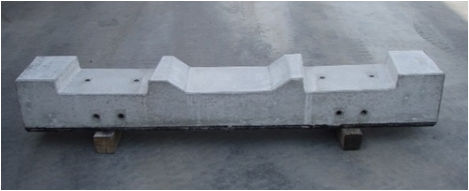
▲Articulated sleeper
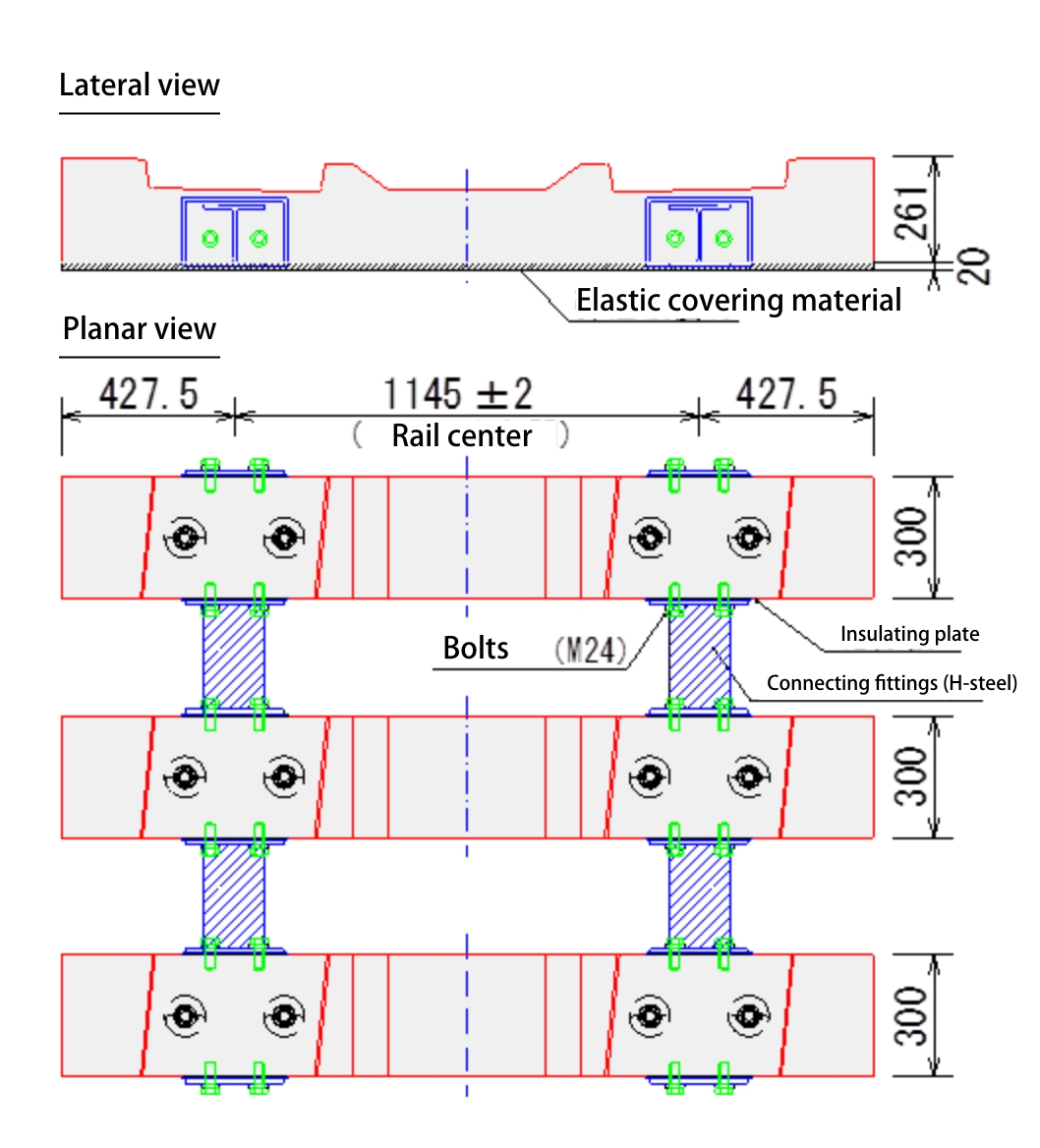
▲Articulation

▲On-site installation
Sleepers for installation of out-of-gauge guards (JR West specifications)
These PC sleepers allow for the installation of devices to prevent significant deviation of the train wheels in the event that a Shinkansen train detaches from the track during an earthquake.

▲Sleepers for installation of out-of-gauge guards

▲Testing (confirmation of horizontal load bearing capacity)

▲Schematic diagram of testing
Mitsubishi Heavy Industries, Ltd. MIHARA Test Center - Four-rail sleepers
These are the four-rail sleepers utilized at the MIHARA Test Center, built by Mitsubishi Heavy Industries, Ltd. as Japan’s first comprehensive transportation demonstration testing facility.

▲On-site installation
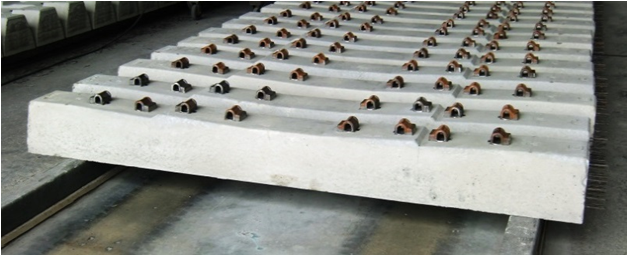
▲Photo of sleepers
Osaka Municipal Transportation Bureau - Advanced sleepers for departure prevention guard installation
Usage of these advanced sleepers for departure prevention guard installation began in fiscal year 2013.
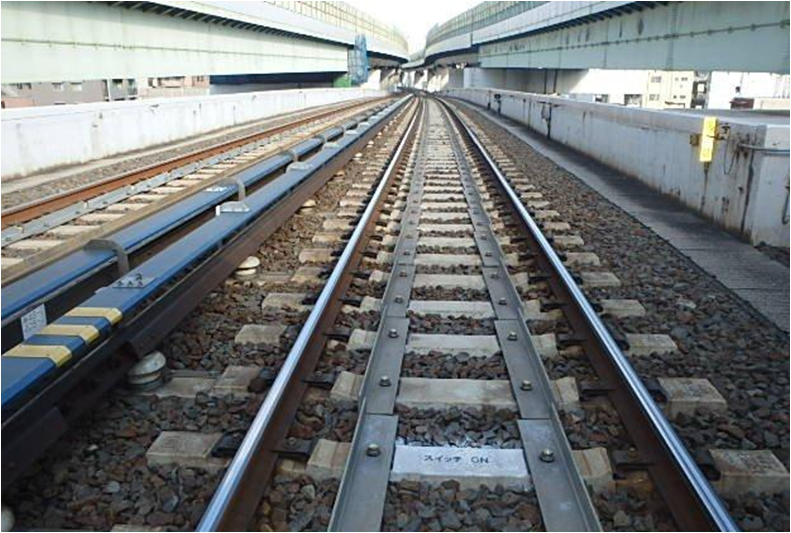
▲On-site installation


▲Photo of sleepers
Sanyo Electric Railway Co., Ltd. sleepers for use as elastic sleepers directly fastened to tracks
These elastic sleepers are used for track vibration control at the Akashi continuous grade separation of Sanyo Electric Railway which went into use from June 2015.

▲After installation

▲Photo of sleepers
3. Main Clients
West Japan Railway Company / Japan Railway West Trading Co. / JR Freight Corporation / Yontetsu Unyu Company / Japan Railway Construction, Transport and Technology Agency / Osaka Metro Co., Ltd. / Kyoto Municipal Transportation Bureau / Kintetsu Railway Co., Ltd. / Keihan Electric Railway Co., Ltd. / Sanyo Electric Railway Co., Ltd. / Semboku Rapid Railway Co., Ltd. / Nankai Electric Railway Co., Ltd. / Hankyu Corporation / Odakyu Electric Railway Co., Ltd. / Daitetsu Kogyo Co., Ltd. / Kosei Kensetsu Co., Ltd. / Yamato Trackwork System Co., Ltd. / Shikoku Railway Company / Nishitetsu Engineering / JR Kyushu Trading Co., Ltd. / Fukuoka City Transportation Bureau / Chikuho Electric Railroad Co., Ltd.


